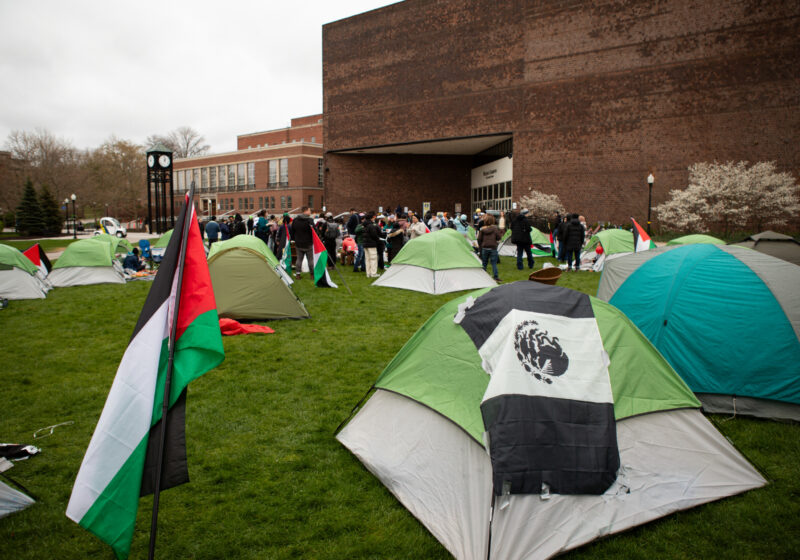As a sophomore, I was lucky enough to discover early on that we have a program offered through the Art and Art History Department called “Art New York.” This program allows students to live in New York City for a semester, do an internship and take art courses.
Participating in this program has allowed me to become fully immersed in art. This is partially because the internship I chose was at the Museum of Modern Art, but mostly because of the nature of New York City. It seems like I can’t go anywhere without running into a museum or gallery. There is even art in the subway stations, from bronze sculptures to tiled mosaics.
Christo’s “The Gates” invaded New York City’s Central Park from Feb. 12-28, which made seeing art in my daily routine even more likely. Christo is an artist known for his public art in which he wraps everything, from bridges and buildings to trees, walkways and parts of coastline. For “The Gates” in Central Park, Christo and his team constructed, assembled and erected 7,503 gates, which were 16-foot-tall, saffron-colored structures resembling large door frames with similarly colored panels hanging from the top of the gate, which provided a great wind flapping effect. Many New Yorkers were uncertain about their feelings toward “The Gates.”
Some felt that it was a waste of money – although its $21 million price tag was financed completely by Christo. In addition, “The Gates” made an enormous amount of money for New York City in tourism. Also, all the proceeds from merchandise sales went to Nurture New York’s Nature and the Arts and to The Central Park Conservancy.
I have to admit, I felt neutral toward “The Gates” when I first heard they were going to line Central Park. I was excited to be living in New York City during such an important moment in art history, but I wasn’t sure if I would really like “The Gates.” To try and gain a clearer understanding of Christo and his work, I attended several of the Museum of Modern Art’s Film series “Christo and Jeanne-Claude: Projects Recorded 1969-1998,” which, over the span of two weeks, showed three decades of Christo’s public art projects.
His projects involved everyone from powerful world leaders to the factory workers that made the materials. Through watching these films, my uncertainty vanished and, as I fell in love with Christo’s work, I knew “The Gates” were going to be spectacular.
I showed up at the heart of Central Park on the cold February morning of the unfurling. “The Gates” were beautiful. Their golden orange flags shone brightly in the sun and stood in striking contrast to the dreary colors and leafless trees that New York in February offers.
However, “The Gates” were much more than just a visually stunning piece of art.
Communities were brought closer together. People interacted with each other and discussed art in a non-intimidating and non-threatening manner. People came with friends, family and even pets to touch the material. Conversations blossomed, people of all ages sketched and countless more took pictures.
For 16 days, “The Gates” transformed the park into a bustling, highly trafficked art display where people of all backgrounds could come and gaze with admiration, skepticism or pure astonishment – and sometimes all three. Even though “The Gates” are no longer standing, the imprint they left in the hearts of those who ventured to Central Park is long-lasting.
“The Gates” provided many New York residents with a needed warmth in the middle of a dreary winter. Spending the spring semester in New York has been a very different experience.
I think the most effective art is the kind that one can project onto their daily lives and continue to think about and evolve from, even when they are not directly in front of the work. Another reason why I think “The Gates” are effective is because they truly are a public work of art, in the middle of the city.
The park being a place where people of all different ethnicities, economic classes and social status’s could come, offered a diversity of audience that museums constantly struggle to achieve.
Colbert can be reached at mcolbert@campustimes.org.
